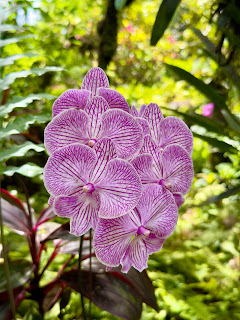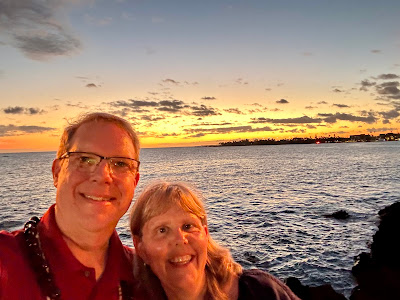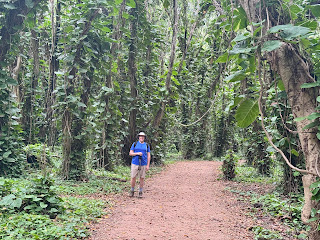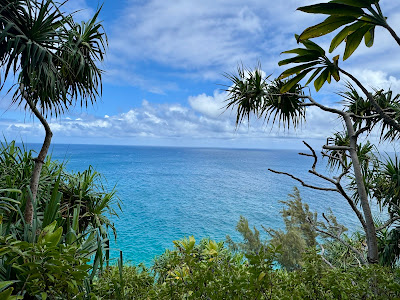During yesterday's Hamakua Coast scenic drive, we stopped and toured the Hawaii Tropical Botanical Garden. Recommended by a friend as the most beautiful spot on Hawaii, we had to pay a visit since it was just outside of Hilo. It was not only visually stunning, but a testament to one man's vision.
Dan Lutkenhouse Sr. discovered the Onomea Valley on the Big Island while vacationing in 1977. In the process of retiring from his trucking company in California, he and his wife decided this is where they wanted to retire and spend the rest of their lives. They bought a 17-acre parcel, and once Dan started exploring the land, he decided he wanted to build a botanical garden in order to preserve the beauty of this valley. What he saw was an area overgrown and choked with invasive species, weeds, and thorn thickets. What he envisioned was a beautiful sanctuary of tropical plants.

Every day of the week for seven years (!!), Dan and his assistant Terry worked with cane knives, sickles, shovels, and other hand tools to clear paths through this jungle landscape. No heavy machinery was used. Without any formal botanical training, but a love of nature, the Garden opened in 1984. It is a colorful tropical paradise with plants from around the world, including a section filled entirely with orchids.
We probably stayed close to two hours wandering through the garden, walking all the way down to the ocean and back. Reflecting back on the time we spent there, I keep returning to this concept of having a vision and making it reality. It's difficult to fathom that two people spent every day for seven years doing heavy manual labor to make his vision come to fruition. Perseverance. Determination. Stamina. The result is a thing of beauty and a legacy his children now carry forward in his memory.

















































